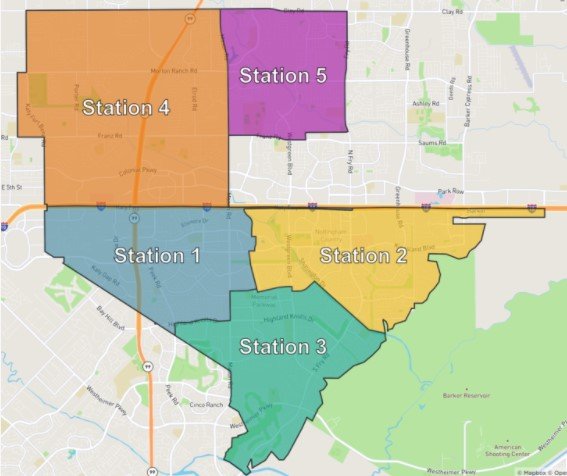HCESD 48 selected to participate in National Fire Protection Association pilot program
Harris County Emergency Services District 48 has been selected by the National Fire Protection Association to participate in the second phase of NFPA’s community risk reduction program. …
This item is available in full to subscribers.
Attention subscribers
To continue reading, you will need to either log in to your subscriber account, or purchase a new subscription.
If you are a current print subscriber, you can set up a free website account and connect your subscription to it by clicking here.
If you are a digital subscriber with an active, online-only subscription then you already have an account here. Just reset your password if you've not yet logged in to your account on this new site.
Otherwise, click here to view your options for subscribing.
Please log in to continue |
HCESD 48 selected to participate in National Fire Protection Association pilot program
Harris County Emergency Services District 48 has been selected by the National Fire Protection Association to participate in the second phase of NFPA’s community risk reduction program. Community risk reduction is a program operated by some emergency response departments to mitigate dangers for high-risk individuals in the community.
“We are thrilled to be participating in this important project,” said Jason Tharp, Division Chief of Community Risk Reduction. “Not only will access to the tool give us invaluable information about our community’s needs, but it’s rewarding to know that using the tool will increase its effectiveness and help other fire departments in the long run.”
The first phase of the project involved the development of a Community Risk Assessment dashboard that included 50 departments from across the nation getting together to develop the CRA software and interface, according to the NFPA website. The second phase will see 250 participating departments, including HCESD 48, will provide additional feedback to streamline the system, which is viewed through an online dashboard, to ensure it operates efficiently and provides meaningful data to users.
“Access to accurate data will allow CRR leaders to use insights and make informed decisions about where to focus efforts and resources,” said Karen Berard-Reed, community risk reduction strategist at NFPA.
As a participant in the program, HCESD 48 will have free access to the software which includes customized charts, maps and graphs, according to a HCESD 48 press release. The visual aids will break down community risk information such as demographics, geography, building materials, economics, infrastructure and historical data. It will also provide a snapshot of capacity for risk reduction activities. CRR activities can include home safety assessments, replacing smoke detectors, installing carbon monoxide detectors and identifying trip hazards for mobility-impaired residents, among other preventive measures.
“CRA is the first step in any CRR plan, but it can be difficult to know the best way to use your data,” said Lorraine Carli, NFPA vice president of outreach and advocacy. “The NFPA CRA digital dashboard will help those involved in CRR tell the data story of their community.”
The second phase will also allow HCESD 48 staff to network with other community safety organizations to discuss best practices from a CRR standpoint. Phase II is expected to last about three months and required HCESD 48 to appoint a three-person liaison team that includes a CRR leader, the fire chief and a third member from the department.
Partaking in the program allows participating departments to provide vital feedback to improve the dashboard, Berard-Reed said. She added that it also places participating departments among safety leaders in the United States and shows the department’s desire to lead in the use of innovative technology that can help save lives.
“While many fire departments have struggled to work with data sets, NFPA’s CRA tool will do the complex work behind the scenes to compile relevant data allowing stakeholders to create effective community risk reduction plans that incorporate five priorities – education, engineering, enforcement, economic incentives and emergency response – in the most impactful ways possible,” said Berard-Reed.
Keywords
HCESD 48, Harris County Emergency Services District 48, CRR, CRA, National Fire Protection Association, Community Risk Reduction, Jason Tharp











